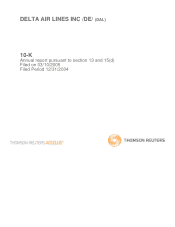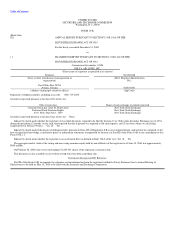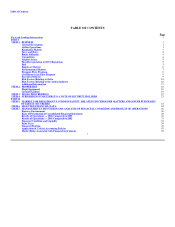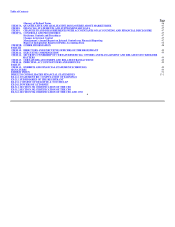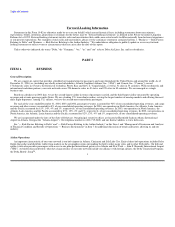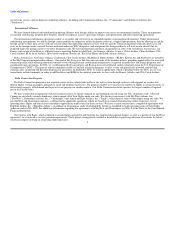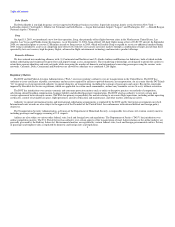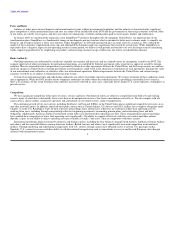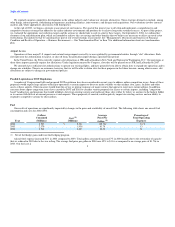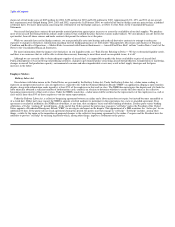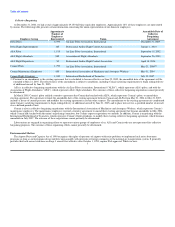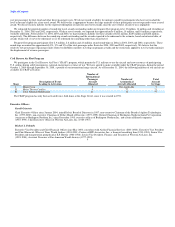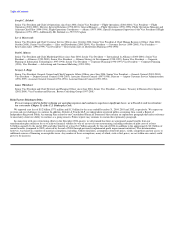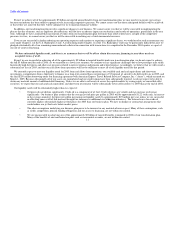Delta Airlines 2004 Annual Report Download - page 5
Download and view the complete annual report
Please find page 5 of the 2004 Delta Airlines annual report below. You can navigate through the pages in the report by either clicking on the pages listed below, or by using the keyword search tool below to find specific information within the annual report.
Table of Contents
Forward-Looking Information
Statements in this Form 10-K (or otherwise made by us or on our behalf) which are not historical facts, including statements about our estimates,
expectations, beliefs, intentions, projections or strategies for the future, may be "forward-looking statements" as defined in the Private Securities Litigation
Reform Act of 1995. Forward-looking statements involve risks and uncertainties that could cause actual results to differ materially from historical experience
or our present expectations. For examples of such risks and uncertainties, please see the cautionary statements contained in Item 1. "Business — Risk Factors
Relating to Delta" and "Business — Risk Factors Relating to the Airline Industry." We undertake no obligation to publicly update or revise any forward-
looking statements to reflect events or circumstances that may arise after the date of this report.
Unless otherwise indicated, the terms "Delta," the "Company," "we," "us," and "our" refer to Delta Air Lines, Inc. and its subsidiaries.
PART I
ITEM 1. BUSINESS
General Description
We are a major air carrier that provides scheduled air transportation for passengers and cargo throughout the United States and around the world. As of
December 31, 2004, we (including our wholly-owned subsidiaries, Atlantic Southeast Airlines, Inc. ("ASA") and Comair, Inc. ("Comair")) served
176 domestic cities in 43 states, the District of Columbia, Puerto Rico and the U.S. Virgin Islands, as well as 51 cities in 33 countries. With our domestic and
international codeshare partners, our route network covers 224 domestic cities in 49 states, and 223 cities in 89 countries. We are managed as a single
business unit.
Based on calendar year 2004 data, we are the second-largest airline in terms of passengers carried, and the third-largest airline measured by operating
revenues and revenue passenger miles flown. We are a leading U.S. transatlantic airline, serving the largest number of nonstop markets and offering the most
daily flight departures. Among U.S. airlines, we have the second-most transatlantic passengers.
For each of the years ended December 31, 2004, 2003 and 2002, passenger revenues accounted for 92% of our consolidated operating revenues, and cargo
revenues and other sources accounted for 8% of our consolidated operating revenues. In 2004, our operations in North America, the Atlantic, Latin America
and the Pacific accounted for 81%, 14%, 4% and 1%, respectively, of our consolidated operating revenues. In 2003, our operations in North America, the
Atlantic, Latin America and the Pacific accounted for 83%, 12%, 4% and 1%, respectively, of our consolidated operating revenues. In 2002, our operations in
North America, the Atlantic, Latin America and the Pacific accounted for 82%, 13%, 4% and 1%, respectively, of our consolidated operating revenues.
We are incorporated under the laws of the State of Delaware. Our principal executive offices are located at Hartsfield-Jackson Atlanta International
Airport in Atlanta, Georgia (the "Atlanta Airport"). Our telephone number is (404) 715-2600, and our Internet address is www.delta.com.
See "— Risk Factors Relating to Delta" and "— Risk Factors Relating to the Airline Industry" in this Item 1 and "Management's Discussion and Analysis
of Financial Condition and Results of Operations — Business Environment" in Item 7 for additional discussion of trends and factors affecting us and our
industry.
Airline Operations
An important characteristic of our route network is our hub airports in Atlanta, Cincinnati and Salt Lake City. Each of these hub operations includes Delta
flights that gather and distribute traffic from markets in the geographic region surrounding the hub to other major cities and to other Delta hubs. Our hub and
spoke system also provides passengers with access to our principal international gateways in Atlanta and New York — John F. Kennedy International Airport
("JFK"). As briefly discussed below, other key characteristics of our route network include our alliances with foreign airlines; the Delta Connection Program;
the Delta Shuttle; SongTM,1

